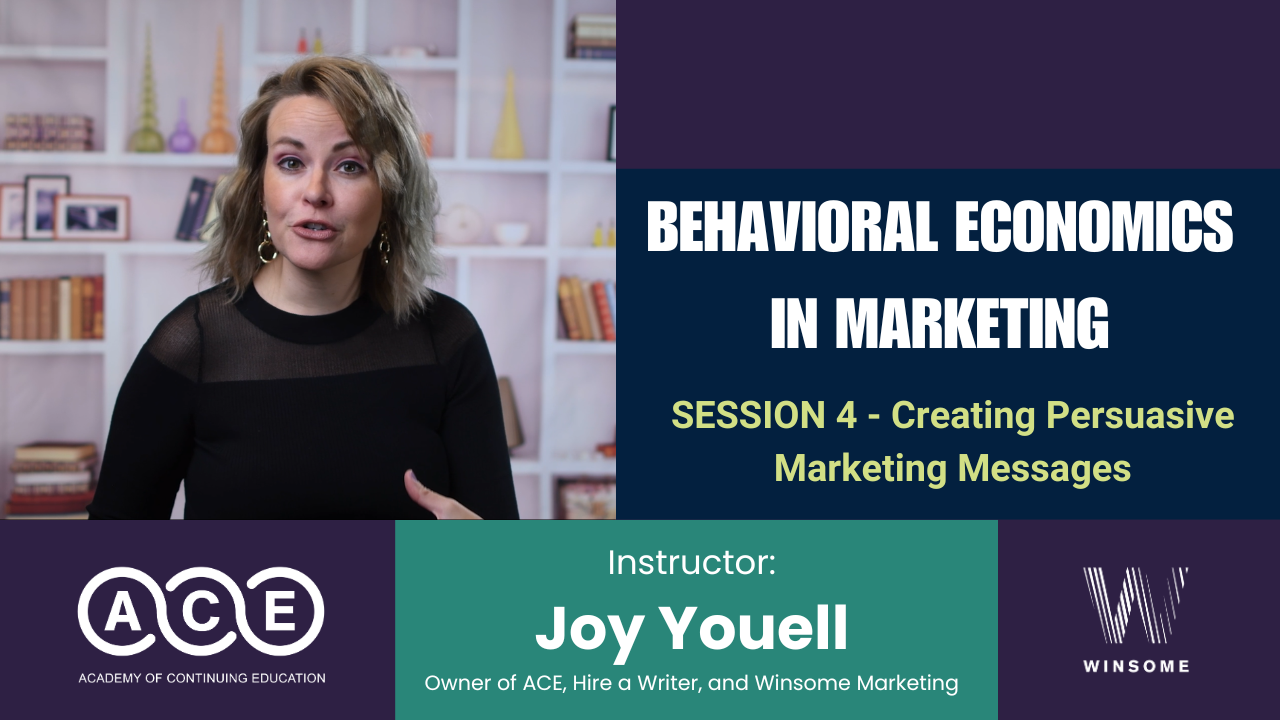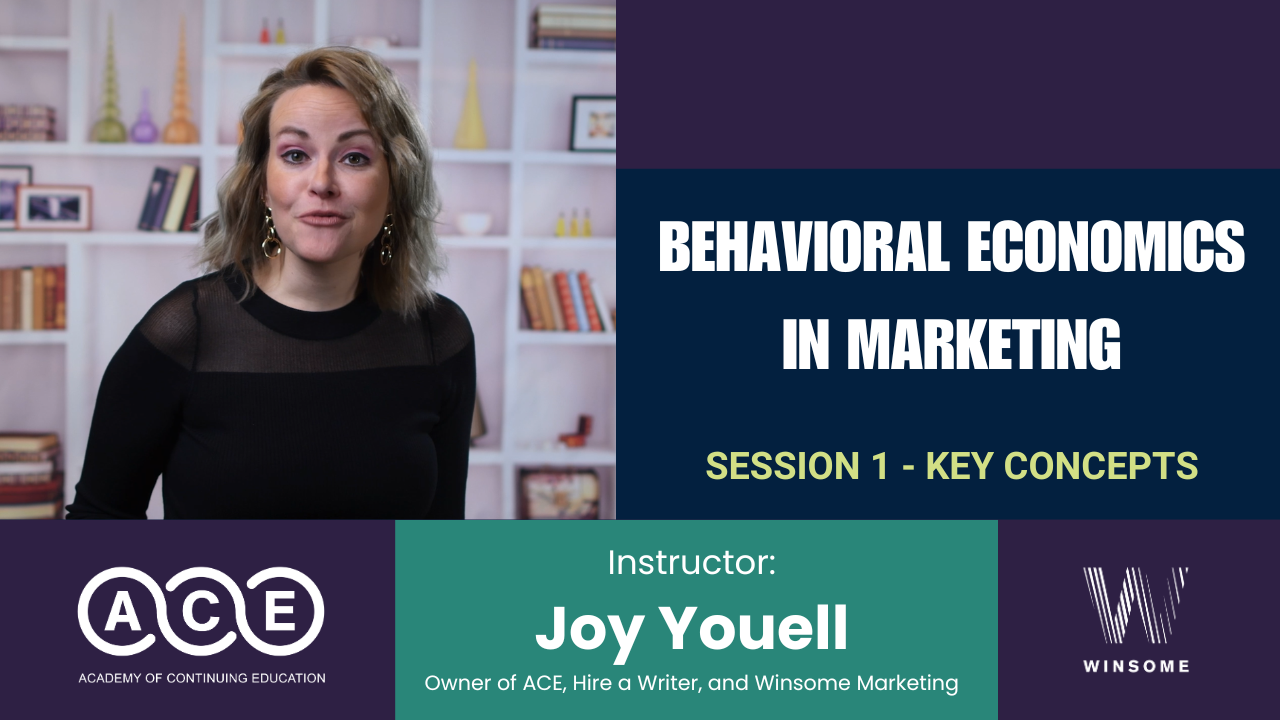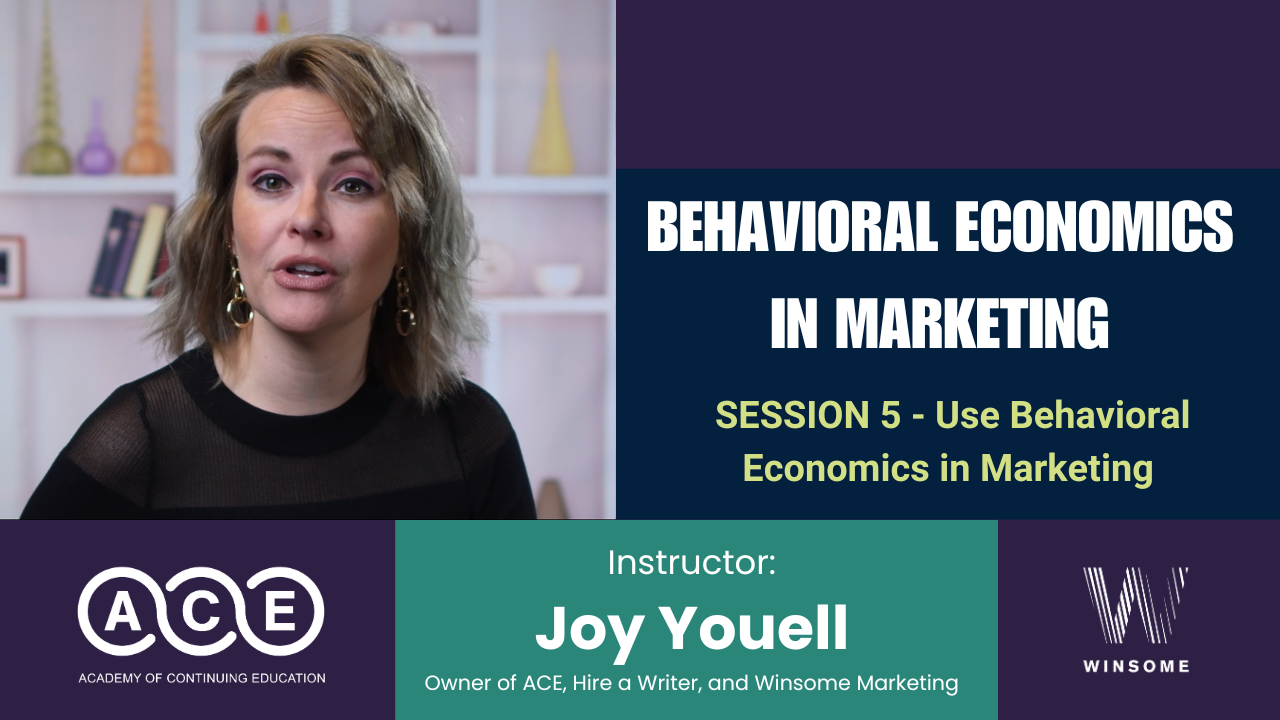Decoding Consumer Decision-Making
Have you ever wondered why consumers choose one product over another when both seem virtually identical? Or why your perfectly logical marketing...
5 min read
 Joy Youell
:
Mar 18, 2025 10:22:39 AM
Joy Youell
:
Mar 18, 2025 10:22:39 AM

In today's hyper-competitive marketplace, simply having a great product or service isn't enough. The most successful brands understand something fundamental: effective marketing isn't just about communicating features and benefits—it's about crafting messages that trigger psychological responses and drive specific behaviors.
By integrating insights from behavioral economics, neuromarketing, and psychological research, marketers can create campaigns that don't just inform consumers but actively persuade them to take action. Let's explore the science behind truly persuasive marketing and how to apply these principles to transform your marketing effectiveness.
Persuasive marketing follows a proven psychological sequence that guides consumers from initial awareness to concrete action:
In an era when the average consumer is bombarded with thousands of marketing messages daily, capturing attention has become increasingly challenging—and increasingly valuable.
Neuromarketing Insights: Research using EEG, fMRI, and eye-tracking technologies has revealed that our brains are instinctively drawn to certain stimuli:
Practical Application: Brands like Apple excel at attention-capturing design with clean, minimalist visuals that stand out precisely because they don't compete in the "loudness wars" of marketing. Their product launches create pattern interruptions through carefully orchestrated reveals that break from everyday visual experiences.
Capturing attention is just the first step—the real challenge is maintaining engagement long enough to deliver your complete message.
Key Insight: Cognitive resources are limited, and consumers unconsciously perform constant cost-benefit analyses about where to direct their attention. Your content must continuously deliver value to keep their engagement.
Practical Application: Effective marketers use:
Once you've sustained attention and interest, you need to transform engagement into genuine desire for your offering.
Trigger Words That Drive Behavior:
Practical Application: Starbucks masterfully cultivates desire through artificial scarcity with their limited-time seasonal offerings. Their pumpkin spice latte campaign combines trigger words like "limited time" with social proof through hashtags like #PSL, creating a powerful FOMO (fear of missing out) response that drives immediate action.
The ultimate goal of persuasive marketing is to convert desire into concrete action. This requires removing friction and providing clear, compelling pathways to the desired behavior.
Key Insight: Humans follow the path of least resistance, even when highly motivated. Every additional step or moment of confusion dramatically reduces conversion rates.
Practical Application: Amazon's "Lightning Deals" combine multiple persuasive elements to drive immediate action:
While the four-stage sequence provides the foundation, several psychological tools can dramatically enhance persuasive impact at each stage:
Stories aren't just entertaining—they're information delivery systems optimized for the human brain. Research shows that narratives:
Practical Application: Gillette's "The Best A Man Can Get" campaign didn't simply promote razor features but wove them into a larger narrative about masculine identity and aspiration. This approach connected their product to deeper emotional drivers and identity signals rather than just functional benefits.
Humans are fundamentally social creatures who look to others—especially authorities and peers—for guidance on decisions.
Key Insight: In situations of uncertainty or complexity, social proof becomes increasingly influential. We unconsciously assume that others possess information we lack.
Practical Application: The UK government significantly increased organ donor registrations not through education or incentives, but simply by highlighting that the majority of people were willing to become donors. This social proof approach—showing that "others are doing it"—created a powerful normative influence.
The perception that something is limited or time-sensitive dramatically increases its perceived value and motivates immediate action.
Key Insight: Scarcity affects us on both rational and emotional levels—rationally by suggesting high demand or limited supply, and emotionally by triggering fear of missing out.
Practical Application: Limited-time promotions, countdown timers, low-stock indicators, and exclusive offers all leverage this principle. The effectiveness of these tactics explains why "deal velocity" is a key metric for many sales teams.
One size does not fit all when it comes to persuasion. Different consumers have fundamentally different decision-making styles:
The Personalization Advantage: Advanced data analytics and AI now allow marketers to identify these decision-making patterns and tailor persuasive approaches accordingly—delivering analytical content to analytical thinkers and emotional content to intuitive processors.
Practical Application: DeBeers' "Diamonds Are Forever" campaign succeeded by addressing both rational and emotional drivers simultaneously. It established a clear social norm (the rational component) while connecting to deep emotional needs for permanence and commitment (the emotional component).
With great persuasive power comes great responsibility. Ethical persuasion requires:
The most sustainable approach is creating genuine alignment between consumer needs and your offerings, using persuasive techniques to overcome inertia and cognitive barriers rather than to mislead.
Ready to enhance the persuasive power of your marketing? Follow this systematic approach:
The most effective persuasive marketing strikes a balance between emotional and rational appeals. While behavioral economics has revealed the primarily emotional and irrational nature of many decisions, providing rational justification remains important—not necessarily for the decision itself, but for the post-decision satisfaction and advocacy that follows.
By understanding the psychological principles that drive human behavior and applying them ethically and systematically, marketers can create campaigns that not only capture attention but transform it into genuine engagement, desire, and ultimately, action.
In today's complex media landscape, this science-based approach to persuasion isn't just a competitive advantage—it's increasingly becoming a requirement for marketing success.
Ready to transform your marketing with proven persuasion principles? Join ACE from Winsome today for exclusive access to cutting-edge research, practical frameworks, and expert guidance on creating more persuasive marketing campaigns. Our community of forward-thinking marketers is revolutionizing how brands connect with consumers through deeper psychological understanding. Sign up now and start creating marketing that doesn't just communicate—but genuinely persuades!

Have you ever wondered why consumers choose one product over another when both seem virtually identical? Or why your perfectly logical marketing...

Traditional marketing approaches often assume consumers make purely rational, self-interested choices—but the reality is far more complex. Enter...

While understanding the theoretical foundations of behavioral economics is valuable, the true power of these insights emerges when we examine how...